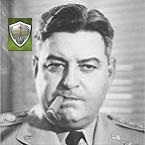ColinWright
Posts: 2604
Joined: 10/13/2005
Status: offline

|
quote:
ORIGINAL: Curtis Lemay
quote:
ORIGINAL: ColinWright
To some extent, you assume modern, breakdown-free vehicles. Ten percent of the vehicles in a British tank brigade might break down in the course of moving a hundred miles; obviously, the combat performance of the brigade would deteriorate sharply with continuous movement. It would recover sharply given a pause of a day or two.
I think that's better covered already via the straggler mechanism. And, even there, you're talking about tracked vehicles. Wheeled vehicles didn't breakdown at that rate. (Perhaps we need another flag for that). Think of the difference in condition of a foot unit that marched 100 miles vs. one that rode that far in trucks.
This gets me thinking about the need for a transport mechanism other than trucks that are an organic part of the unit.quote:
quote:
In any case, for the distinction to be addressed properly, one really would need supply broken into several categories -- and have it operate in several ways. Trucks, for example will really eat up the miles -- until they run out of gas. Foot soldiers can keep moving on a minimum of supply. So the model might be about right for non-motorized movement in country with water, a minimum of forage, etc. It's almost irrelevant to the mechanics of motorized movement. My truck goes great until there's no more gas. Then it stops completely.
There's a completely different parameter for all of that: Supply. Readiness is a different issue. That raises another complaint: Why should readiness be reduced to the supply level, if it's lower? Shouldn't they be completely independent?
quote:
I don't see motorized units as intrinsically having a 'big edge.' They're a lot faster -- as long as their needs for petrol are met. When these needs aren't met, they're completely immobile.
Tell that to the foot-bound Italians in O'Connor's Raid. Motorized troops can manuver without getting fatigued. That's a big edge.
Tell your claim to the immobilized panzer divisions in the Stalingrad pocket. Infantry can walk without gasoline. That can be a big edge.
You seem to want motorized units to simply be less subject to exhaustion. I think that's not what's needed -- and that such a change wouldn't improve matters. I think what you're doing is simply pointing up the need for a more sophisticated, multi-part supply model.
In any case, if we did have separate transportation units and/or a capacity for 'embussed' movement along roads, it would deal with at least part of your complaint. Trucked infantry could indeed ride along without losing readiness and supply. They just wouldn't be able to take their trucks into battle with them. For artillery, one can see the loss of readiness and supply as reflecting the need to reestablish shell dumps, register fire, etc. For tanks, well -- those do break down, as you noted. In an ideal world, I'd like a varying breakdown rate for tanks. It would help to explain why the Sherman really wasn't such a bad tank after all.
< Message edited by ColinWright -- 2/21/2008 10:03:21 PM >
_____________________________
I am not Charlie Hebdo
|
 Printable Version
Printable Version






 . Increasing scale of possible readiness values couldn't be very simple. For example - I don't like to see Paulus' army with readiness at 100% and supply at 0% - a rest without food in a freeze isn't really effective. We could replace present rule (readiness is between 33% and present supply level) by a similar - readiness is between 1% and supply_level+33%. Without readiness fixed at at least 33% artillery couldn't fire without any limits.
. Increasing scale of possible readiness values couldn't be very simple. For example - I don't like to see Paulus' army with readiness at 100% and supply at 0% - a rest without food in a freeze isn't really effective. We could replace present rule (readiness is between 33% and present supply level) by a similar - readiness is between 1% and supply_level+33%. Without readiness fixed at at least 33% artillery couldn't fire without any limits. 

 New Messages
New Messages No New Messages
No New Messages Hot Topic w/ New Messages
Hot Topic w/ New Messages Hot Topic w/o New Messages
Hot Topic w/o New Messages Locked w/ New Messages
Locked w/ New Messages Locked w/o New Messages
Locked w/o New Messages Post New Thread
Post New Thread